If you’ve ever wondered how the ancient Greeks believed agriculture spread across the world, Triptolemus was responsible. This hero is often overlooked in the vast pantheon of Greek mythology. However, he played a pivotal role in the story of cultivation and farming.
Triptolemus Key Facts
| Parents | Gaia and Oceanus (or Celeus and Metaneira) |
| Partners | None known |
| Siblings | None significant |
| Offspring | None known |
| Other names | Triptolemos |
| Roman name | Triptolemus |
| Best Known Myth | Spreading the knowledge of agriculture |
Name and Etymology
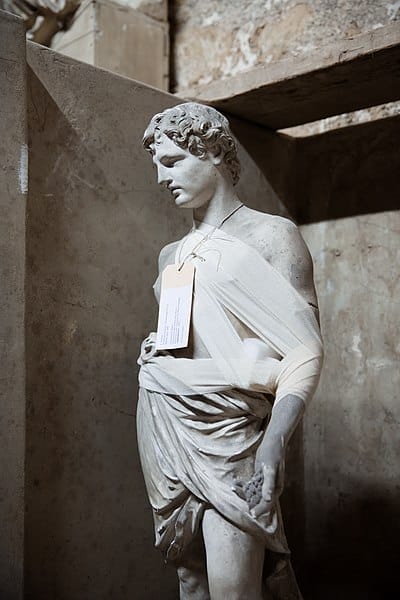
Triptolemus, sometimes spelled as Triptolemos, is a name that resonates with the essence of agriculture. The etymology of his name is a bit of a mystery, but some scholars believe it might be derived from Greek words that mean “threefold warrior” or “threefold toil.” This could be a nod to his tireless efforts in spreading the knowledge of farming. His Roman counterpart goes by the same name, which is quite rare as many Greek figures often have different Roman names.
Triptolemus Family and Relationships
The lineage of Triptolemus is a topic of much debate and intrigue in the annals of Greek mythology. On one hand, some ancient sources suggest that he was of divine origin, born to Gaia, the primordial Earth goddess, and Oceanus, the titan god of the ocean. This divine parentage would place him among the ranks of significant figures in Greek mythology, emphasizing his importance in the narrative of agriculture.
On the other hand, there are tales that paint Triptolemus as a mortal, born to the Eleusinian king Celeus and his queen Metaneira. Some variations even suggest Polymnia, a muse, as his mother. This mortal lineage ties him closely to the story of Demeter’s wanderings. It was in the home of Celeus and Metaneira that Demeter, in her grief over the loss of Persephone, was said to have taken refuge.
Regardless of his debated parentage, what remains undisputed is Triptolemus’ pivotal role in the dissemination of agricultural knowledge. Whether divine or mortal, his legacy in Greek mythology is profound, symbolizing the bridge between the heavens, the earth, and mankind.
Myths about Triptolemus
The Blessing of Demeter
In the vast tapestry of Greek myths, the tale of Triptolemus and Demeter stands out as a beacon of hope and transformation. When Demeter’s beloved daughter, Persephone, was abducted by Hades, the heartbroken goddess wandered the earth in search of her. During her wanderings, she took refuge in the home of Triptolemus’ parents in Eleusis. Moved by their kindness and hospitality, Demeter decided to bestow upon their son a gift that would change the course of human history.
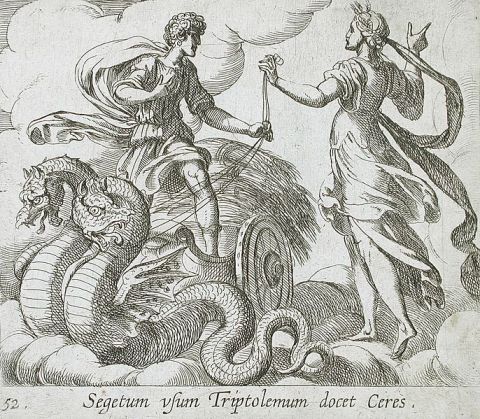
She taught Triptolemus the secrets of agriculture: the art of plowing the earth, sowing seeds, and harvesting crops. It was during this divine intervention that Triptolemus was credited with the invention of the plough. However, Demeter’s gift didn’t end there. She presented him with a magnificent chariot drawn by serpents, a symbol of rebirth and transformation. With this chariot, Triptolemus was to travel the world, spreading the newfound knowledge of farming.
Triptolemus’ Divine Mission
Embracing his divine mission, Triptolemus journeyed far and wide. From the sun-kissed fields of Greece to distant lands. He taught people the magic of turning barren soil into bountiful fields using the plough. Under his guidance, nomadic tribes settled down, forming the first agricultural communities. The serpent-drawn chariot became a symbol of hope. Moreover it signaled the arrival of prosperity and abundance wherever it went.
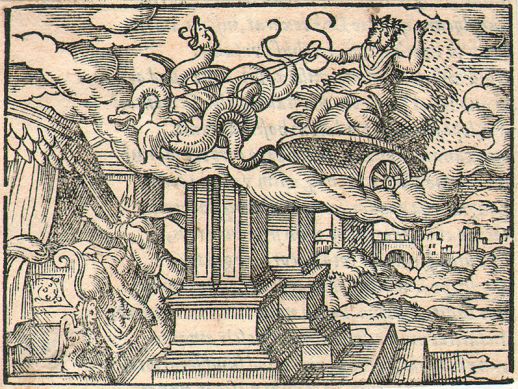
As he traveled, Triptolemus encountered various challenges. Some regions were resistant to the idea of settling down, while others faced environmental challenges that made farming difficult. But with Demeter’s teachings, the invention of the plough, and his unwavering determination, he overcame these obstacles, adapting and innovating farming techniques to suit different terrains and climates.
The impact of Triptolemus’ journey was profound. Societies transformed, cultures evolved, and the very fabric of human civilization was altered. No longer at the mercy of nature’s whims, people could now grow their own food, leading to the rise of great cities and empires.
This myth, while a tale of divine intervention, also underscores the importance of knowledge, innovation, and the indomitable human spirit. Triptolemus, with Demeter’s blessing, didn’t just introduce agriculture; he laid the foundation for human progress.
Depiction And Characteristics
When you picture Triptolemus, imagine a young man often seen riding a chariot pulled by serpents, a gift from Demeter. This chariot symbolizes his divine mission to spread agricultural knowledge.
Iconography in Ancient Artifacts
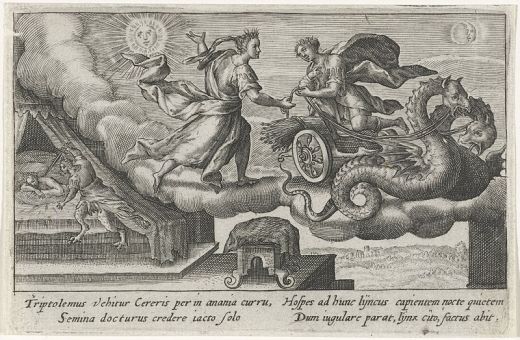
Triptolemus, with his pivotal role in the spread of agriculture, has been a muse for many ancient artisans. His most iconic representation is that of a young man aboard a chariot pulled by serpents. It was a divine gift from Demeter symbolizing his mission. This imagery is both a testament to his divine purpose as well as a reflection of agricultures’ tansformative power.
The Triptolemus Vase
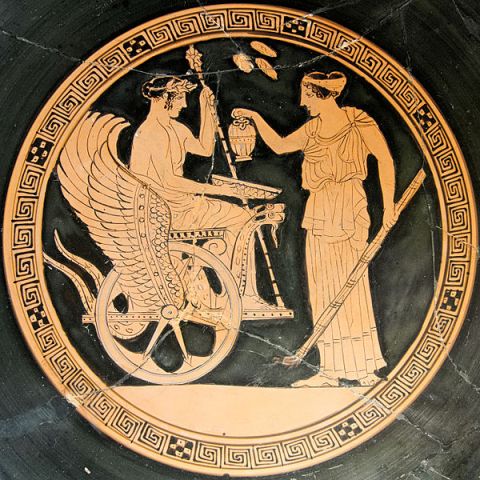
One of the most celebrated artifacts showcasing Triptolemus is the “Triptolemus Vase” discovered in Eleusis. This intricately designed vase portrays his global journey, with the serpent-drawn chariot taking center stage. The detailed artwork captures the essence of his teachings, with scenes of plowing, sowing, and harvesting vividly depicted.
Frescoes of the Villa of the Mysteries
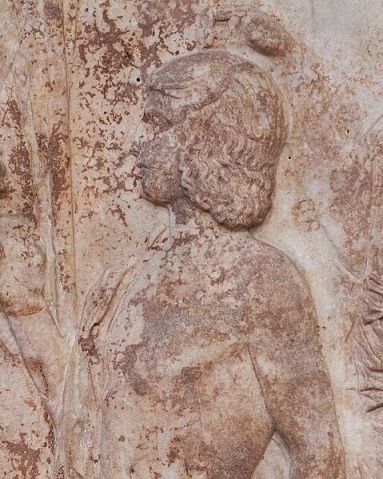
In Pompeii, the Villa of the Mysteries houses some of the most exquisite frescoes from the Roman era. Among these artworks, Triptolemus is depicted receiving sheaves of grain from Demeter. This moreover is a nod to the knowledge he was bestowed and the mission he undertook. The fresco, with both its vibrant colors and intricate details, offers a glimpse into the reverence held for Triptolemus.
Through these artistic representations, we get a sense of the profound impact Triptolemus had on ancient societies. His depictions are not just about the man but also about the idea of transformation, progress, and the dawn of a new era in human civilization.
Mentions in Ancient Texts
Homer’s “Hymn to Demeter”
Written around the 7th century BC by the legendary poet Homer, the “Hymn to Demeter” offers a detailed account of Triptolemus’ encounter with the goddess Demeter. A poignant quote from this hymn captures the essence of Triptolemus’ mission:
“Blessed Triptolemus, whom the world shall always honor as the bringer of bounty.”
Ovid’s “Metamorphoses”
The Roman poet Ovid, in his magnum opus “Metamorphoses” written around 8 AD, narrates the transformation myths of the Greco-Roman world. A notable line referencing Triptolemus goes:
“By Demeter’s gift, he turned the clod with curved plow, sowed the seeds of crops, and gave the people bread.”
Frequently Asked Questions
He is renowned for spreading the knowledge of agriculture, a gift he received from the goddess Demeter.
Triptolemus was the son of Oceanus and Rhea.
The serpent-drawn chariot was a gift from Demeter, symbolizing his divine mission to spread farming.
Yes, including the “Triptolemus Vase” in Eleusis and frescoes in the Villa of the Mysteries in Pompeii.
Featured Image Credit: Louvre Museum, CC BY-SA 3.0, via Wikimedia Commons
